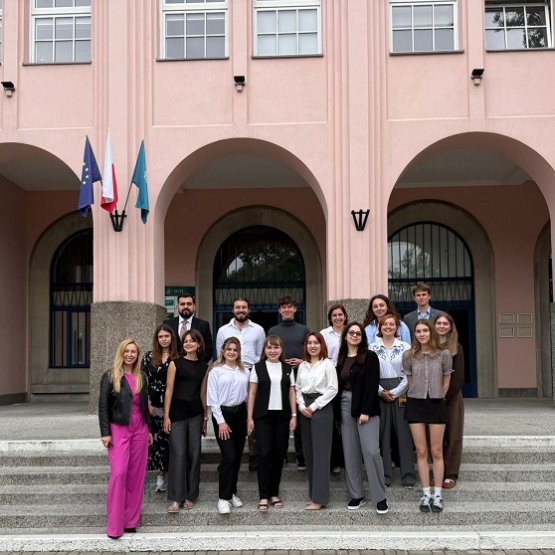
The Humboldtian University in its pure form is, after all, a thing of the past.
According to a report prepared, among others, by researchers from CHEPS (the Center for Higher Education Policy Studies – a research unit of the University of Twente), the following characteristics of a culture and quality culture can be distinguished (cf. J. Brennan, L. Cremonini, R. King, R. Lewis, M. Wells, D. Westerheijden, Cultures of Quality, An International Perspective. Final Report of Phase 2, The Quality Assurance Agency for Higher Education, 2017): 1) cultures are created by people and thus can be both drivers and barriers to change; 2) a quality culture should lead to quality education (the process of learning and teaching); 3) a cultural change can be introduced top-down or bottom-up.
The first point covers a broad spectrum of different challenges related to people in an organisation. For example, academics often view their careers in terms of disciplines rather than institutions of higher education, making them more susceptible to “normative isomorphism” with representatives of their disciplines from other universities than to “forced isomorphism” resulting from top-down changes within a single university (pro: H. Mintzberg, Organizations, Prentice-Hall, Englewood Cliffs 1979). The challenge can therefore be that academics identify with a particular university, which can lead to the formation of multiple subcultures within a single university.
Another feature of the quality culture proposed by the CHEPS team is its purpose: to lead to high quality education, i.e., teaching and learning. Thus, it is assumed that a quality culture affects the relationship between the student and the lecturer. At this point, one can return to the discussion of which comes first: does a culture of quality shape the educational process, or does the relationship between the student and faculty (the educational process) create the culture of quality?
The last point is about introducing changes. The top-down perspective is governed by specific acts of internal institutional law (e.g., senate resolutions, orders, and decisions of the rector), and the bottom-up perspective is based on the attitudes and values of individual members of the institution (faculty, administrative staff, students, etc.). A characteristic approach to the top-down perspective is a quote from Peter Drucker‘s book: “If you can’t measure something, you can’t manage it,” and for a bottom-up perspective, a quote attributed to Albert Einstein: “Everything that can be counted does not necessarily count; everything that counts cannot necessarily be counted” (D.F. Westerheijden, Quality Assurance, Quality Culture, and Enhancement of Teaching and Learning, presentation in webinar, SGH Warsaw School of Economics, January 22, 2021, slide 9).
It is assumed that a culture of quality should first and foremost support good education. The external result of a good education is the increasing value of university graduates to society (not only to employers, but also – in the broader sense of the word “environment” – even to humanity). Good education must be defined by the mission and goals of the university.
The overall goal of higher education units is to create academic and public value, so academic values should be linked to public values (cf. The Impact and Value of Higher Education, CHEPS, https://www.utwente.nl/en/bms/cheps/research/research-profile/theme-1/, access date: 10 April 2022). Academic values include, in particular: 1) truth-seeking; 2) academic freedom; 3) institutional autonomy; 4) accountability; 5) equitable access; and 6) social responsibility.
Public values are those that provide normative consensus on: 1) the rights, benefits, and prerogatives to which citizens should be entitled; 2) the duties of citizens to society, the state, and each other; 3) the principles on which governments and policies should be based (cf. B. Bozeman, Public Values and Public Interest: Counterbalancing Economic Individualism, Georgetown University Press, Washington D.C. 2007).
Quality Culture was the subject of the study How Can One Create a Culture for Quality Enhancement?, conducted by CHEPS, among others (cf. A. Kottmann, J. Huisman, L. Brockerhoff, L. Cremonini, J. Mampaey, How Can One Create a Culture for Quality Enhancement?, CHEPS and CHEGG, October 2016). The research work was aimed at expanding the knowledge base on quality cultures in teaching and learning, identifying possible actions to improve the quality of higher education at national, institutional, and programmatic levels, with particular emphasis on creating and strengthening a culture of quality. Some conclusions were drawn from the research (A. Kottmann et al., How Can One Create a Culture for Quality Enhancement?, op.cit., p. 7).
- Establishing a foundation of shared values that define high-quality teaching and learning is important for successful follow-up work or quality management and strengthening quality cultures.
- Motivation for academic staff to engage in quality work can be achieved by framing teaching and learning activities as having similar characteristics to research activities. Integrating teaching achievement into career pathways institutionalises the importance of teaching and learning. Offering staff the resources, especially time, to become more involved in teaching and learning provides the impetus for quality improvement.
- Effective leaders are those who commit to implementing change in a timely manner and compelling narrative. A hybrid leadership style – bottom-up collegial initiatives combined with a top-down managerial vision – is particularly important.
- Staff members are more strongly motivated to engage in professional development if conflicts of purpose are prevented (e.g., time constraints resulting from prioritizing research over teaching) and if improving teaching competence is embedded in communication structures that enable teachers to discuss and share experiences. Creating a culture of quality may be a challenge, and the same goes for maintaining it. Institutionalising regular reporting and reflection on achievements are important mechanisms. Formal and institutional accreditation may support sustainability, but attention must also be paid to the engagement and accountability of researchers.
A culture of quality is a considerable challenge for the entire higher education sector. The problems it faces (such as negative selection, the erosion of the educational process represented by the so-called “diploma printing houses” or the “didactic illusion”) lead to the fact that academic values are not values shared by given universities or given lecturers and students. Universities become businesses based on maximising short-term revenue and minimising costs.
I would like to end this article with a rather extensive quotation, which touches upon the essence of challenges connected with the functioning of universities, including the culture of quality (cf. E. Chmielecka, Wspólnota akademicka, wspólnota obywatelska, in: Rola uczelni w rozwijaniu społeczeństwa obywatelskiego, J. Dietl, Z. Sapijaszka (ed.), Fundacja Edukacyjna Przedsiębiorczość, Łódź 2009, p. 111-131): “What is happening to the institution of the university in the world in recent decades that also provides a backdrop for the transformation of our universities? Generally speaking, it is the transformation of the Humboldtian university – (...) a self-governing and autonomous academic institution governed mainly by ethos values, elite, small in number, conducting research and spreading knowledge of the highest rank, well isolated from the influence of the economic and social outside, bearing responsibility for its activities only to its own ideals and history – into a university which must also be an economic entity, (...) fulfil minor and direct social duties, which is enlarged, in which educational functions often replace research functions, which must account to the authorities and the taxpayer for the use of the public funds it has received, and to the direct payers (e.g., the students) for the quality of services and the level of fulfilment of their wishes, which must be managed in accordance with the principles of economic efficiency and respond to the needs of the labour market, (...) also to face competition on the educational market.
In short, the university-temple of knowledge is becoming an institution of tertiary education. The loss of community by the academy, emerging with the enlargement and commercialisation of higher education, the emergence of institutions of higher education that fill the needs and wishes of stakeholders, means a change in one of the channels for the formation of civic attitudes and the loss of an effective way to form civic elites. The latter require subordination to values, not interests. When academic communities become «action groups»/institutions, then universities must find their own modus operandi of community and institution. Given their internal conflict, there is (...) no coherent and satisfactory solution. The institutional culture of the university encompasses both of these fields, but may be directed more toward interests or, more so, toward pure values. (...) a possible solution is the diversification of universities, their differentiation stretched between two poles: firstly, institutions that are elite communities, primarily driven by academic ethos, whose servitude will be realised thanks to their independence from the influence of the social outside; secondly, institutions that are directly servile, which will be predominantly subject to the direct influence of the external environment.”
dr hab. JAKUB BRDULAK, prof. SGH Warsaw School of Economics, Department of Strategic Management, College of Management and Finance, Representative of the Rector for the Academic Quality Management System
This article is based on the author’s chapter ”Organisational culture vs. quality culture – how to support real mechanisms for improving higher education at universities?” prepared for the planned publication Quality culture in academic education edited by Justyna Bugaj and Beata Mikołajczyk (UJ and UAM, 2022).



